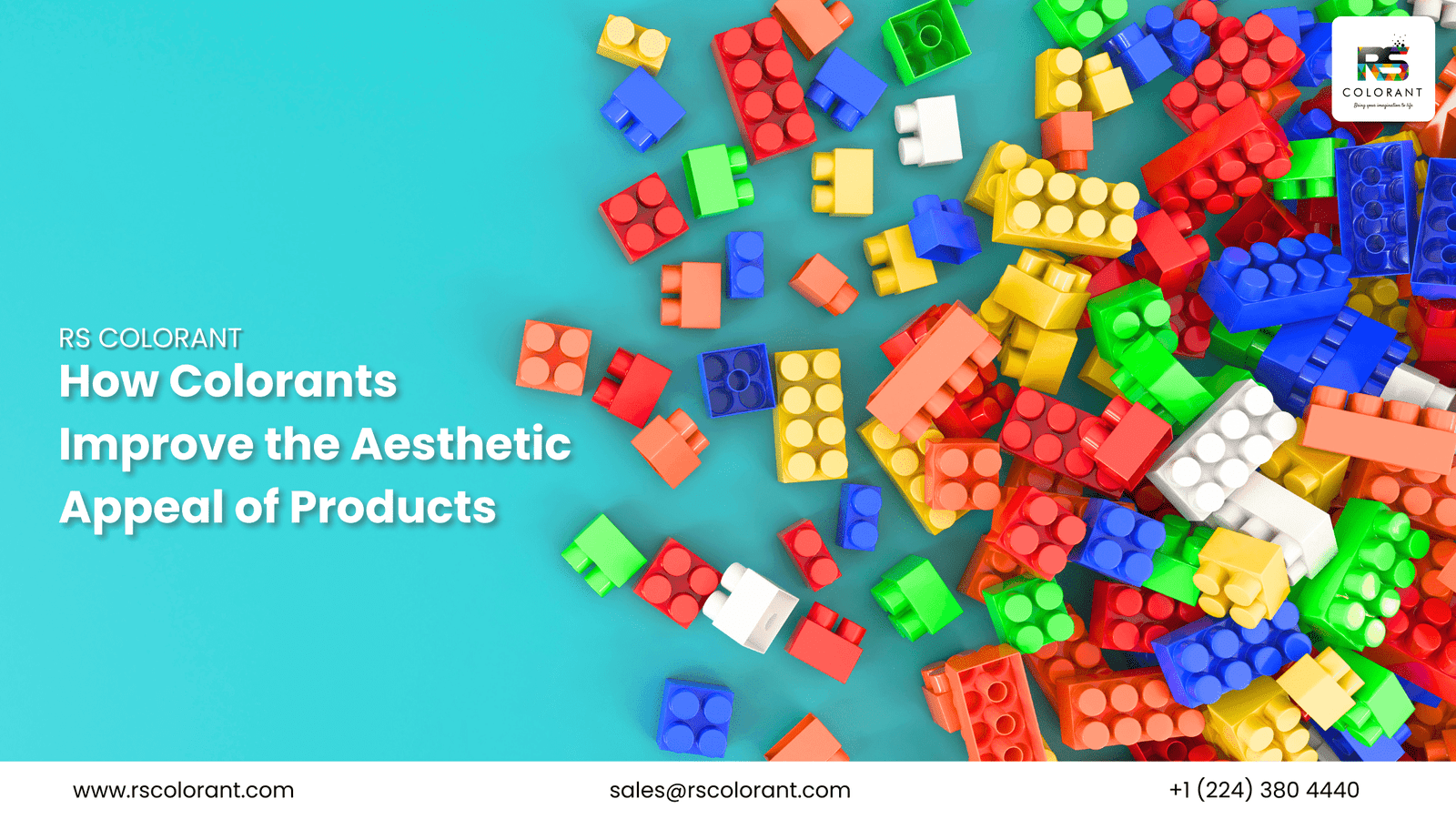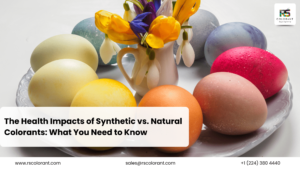How Colorants Improve the Aesthetic Appeal of Products
In today’s highly competitive market, the aesthetic appeal of products plays a crucial role in influencing consumer choices. One of the most effective ways to enhance this appeal is through the use of colorants. Colorants not only provide visual attractiveness but also contribute to brand identity and product differentiation. This article explores the significant impact of colorants on the aesthetic appeal of products, supported by industry statistics and insights.
The Role of Colorants in Product Design
Enhancing Visual Appeal
Color is one of the first things consumers notice about a product. A study by the Institute for Color Research revealed that people make a subconscious judgment about a product within 90 seconds of initial viewing, and up to 90% of that assessment is based on color alone. This underscores the importance of choosing the right colorants to captivate and retain consumer interest.
Colorants, whether natural or synthetic, are substances added to products to impart color. They are widely used in various industries, including food and beverages, cosmetics, textiles, plastics, and more. The choice of color can evoke emotions, convey messages, and even influence purchasing decisions.
Creating Brand Identity
Brand identity is significantly shaped by color. Major brands are often recognized by their distinctive color schemes. For instance, Coca-Cola is synonymous with its vibrant red, while Tiffany & Co. is known for its unique shade of blue. These colors are not arbitrary but are carefully selected to reflect the brand’s personality and values.
Colorants help in maintaining consistent brand colors across different product batches. This consistency is vital for brand recognition and loyalty. According to a study by the University of Loyola, color increases brand recognition by up to 80%. Therefore, using high-quality colorants ensures that the brand’s visual identity remains intact.
Differentiating Products
In a crowded marketplace, standing out is essential. Colorants enable products to differentiate themselves from competitors. For example, in the cosmetics industry, different shades of lipsticks or eyeshadows attract various customer segments. Unique and appealing colors can make a product more desirable and encourage customers to choose it over others.
Moreover, colorants can be used to signify different product lines or variants. For instance, a skincare brand might use pastel colors for its gentle, everyday products and bold, vibrant colors for its premium range. This differentiation helps consumers easily identify the product that suits their needs.
The Science Behind Colorants
Types of Colorants
Colorants are broadly classified into dyes and pigments. Dyes are soluble substances that impart color through a chemical reaction with the substrate, making them suitable for textiles, paper, and some plastics. Pigments, on the other hand, are insoluble and provide color through dispersion, making them ideal for coatings, inks, and certain types of plastics.
- Natural Colorants: Derived from plant, animal, or mineral sources, natural colorants are gaining popularity due to the increasing demand for clean-label products. Examples include beetroot powder for red hues and turmeric for yellow shades.
- Synthetic Colorants: These are man-made and offer a broader range of vibrant colors and better stability compared to natural colorants. They are widely used in industries where consistent and vivid colors are essential.
Application Techniques
The method of applying colorants varies depending on the industry and the product. Some common techniques include:
- Dyeing: Used primarily in the textile industry, dyeing involves immersing fabrics in a dye solution to achieve the desired color.
- Coating: Involves applying a layer of pigment-based paint or varnish to the surface of a product, commonly used in the automotive and furniture industries.
- Printing: Utilized in packaging, textiles, and publishing, printing involves transferring colorants onto a substrate using various printing methods such as screen printing, digital printing, or offset printing.
Quality Control
Ensuring the quality and consistency of colorants is crucial. Variations in color can lead to customer dissatisfaction and harm a brand’s reputation. Therefore, rigorous quality control measures are implemented, including:
- Spectrophotometry: This technique measures the intensity of color and ensures it matches the desired standard.
- Batch Testing: Each batch of colorant is tested for consistency and performance to maintain uniformity across product lines.
- Stability Testing: Colorants are tested for their stability under various conditions such as light, heat, and humidity to ensure they do not degrade over time.
Industry Applications of Colorants
Food and Beverages
In the food industry, colorants are used to make products more appealing and appetizing. According to a report by MarketsandMarkets, the global food colorant market is projected to reach $5.12 billion by 2023, growing at a CAGR of 5.7%. Natural colorants like carotenoids, anthocyanins, and chlorophylls are increasingly preferred due to their health benefits and clean-label attributes.
Colorants in food not only improve visual appeal but also indicate flavor and quality. For example, vibrant red or yellow hues in candies and beverages are often associated with fruity flavors, while green might suggest mint or apple. Additionally, color consistency in food products ensures that consumers have the same visual experience every time they purchase the product.
Cosmetics and Personal Care
In the cosmetics industry, colorants are crucial for creating an extensive range of makeup products, including lipsticks, eyeshadows, and nail polishes. The global market for cosmetic colorants is expected to reach $2.9 billion by 2027, according to Grand View Research.
Consumers often choose cosmetic products based on color, making it essential for brands to offer diverse and trendy shades. High-quality colorants ensure that the colors are vibrant, long-lasting, and safe for use on the skin. Moreover, the rise of vegan and cruelty-free cosmetics has led to the development of natural and ethically sourced colorants.
Textiles
The textile industry heavily relies on colorants to produce fabrics in a multitude of colors and patterns. According to the Textile Colorant Market report by Mordor Intelligence, the textile colorant market is expected to grow at a CAGR of 5.8% from 2021 to 2026.
Dyes and pigments are used to achieve the desired color and design on fabrics. Advanced dyeing techniques allow for the creation of intricate patterns and color combinations, enhancing the aesthetic appeal of clothing and home textiles. Color fastness, or the resistance of color to fading or running, is a critical quality parameter ensured by high-quality colorants.
Plastics
In the plastics industry, colorants are used to create visually appealing products ranging from household items to automotive parts. The global plastic colorant market is projected to grow significantly, driven by the demand for aesthetically pleasing plastic products.
Pigments and dyes are added to plastic resins to achieve the desired color. Masterbatch, a concentrated mixture of pigments and additives, is commonly used to ensure uniform color distribution in plastic products. Colorants in plastics not only enhance appearance but also provide UV protection and improve material performance.
Future Trends in Colorants
Sustainable Colorants
With the growing emphasis on sustainability, there is a shift towards eco-friendly colorants. Natural and biodegradable colorants are gaining popularity as consumers and manufacturers become more environmentally conscious. Innovations in sustainable colorant production, such as using agricultural waste or algae, are expected to drive the future of the industry.
Smart Colorants
Technological advancements have led to the development of smart colorants that change color in response to environmental stimuli such as temperature, light, or pH. These colorants are finding applications in various fields, including fashion, packaging, and safety.
For example, thermochromic colorants, which change color with temperature, are used in mood rings and color-changing cups. Photochromic colorants, which respond to light, are used in sunglasses that darken in sunlight. These innovative colorants offer unique functionalities and enhance the user experience.
Digital Color Matching
Digital technologies are revolutionizing the colorant industry. Digital color matching systems allow for precise and rapid color formulation, reducing waste and improving efficiency. These systems use advanced software and spectrophotometers to match colors accurately, ensuring consistency across different batches and products.
Moreover, digital printing technologies enable the application of complex designs and multiple colors in a single process. This innovation is particularly beneficial for industries like textiles and packaging, where customization and quick turnaround times are essential.
Conclusion
Colorants play a pivotal role in enhancing the aesthetic appeal of products across various industries. From attracting consumer attention and creating brand identity to differentiating products and ensuring quality, the impact of colorants is undeniable. As consumer preferences evolve and technology advances, the colorant industry continues to innovate, offering sustainable, smart, and digitally enhanced solutions.
By understanding the significance of colorants and leveraging their potential, brands can create visually appealing products that stand out in the competitive market. Whether it’s the vibrant red of a beverage, the bold shade of a lipstick, or the intricate pattern on a fabric, colorants make products more attractive, engaging, and desirable.




